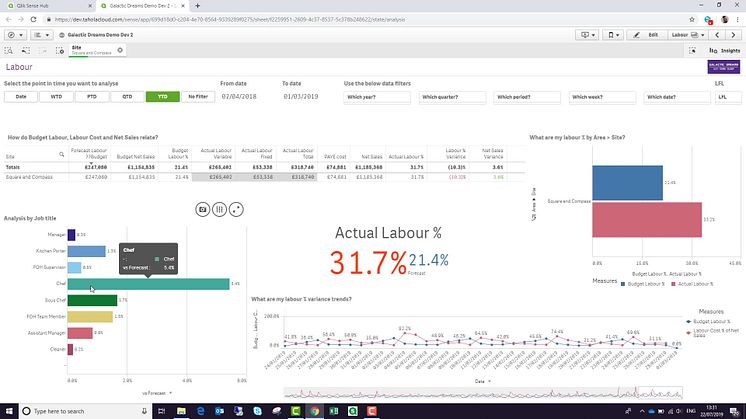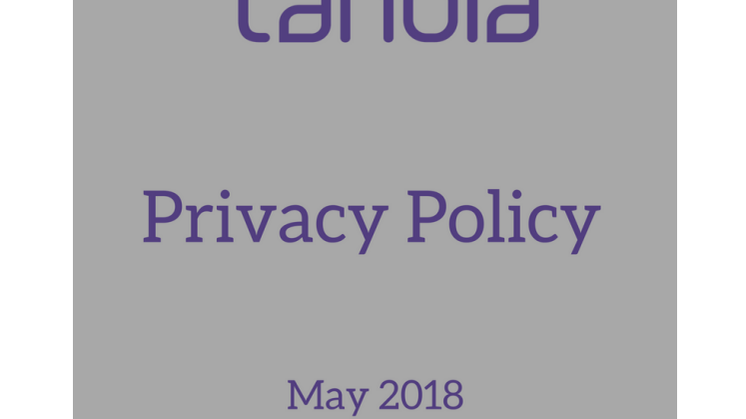Blog post -
‘Implementing People Analytics to drive change and improve productivity’
People analytics is rising up the agenda for organisations globally. With technology providing businesses more and more ways to collect people data, using this information to gain workforce insight, drive business performance and enhance employee experience is expected to grow.
In a 2018 CIPD survey of more than 3,500 business professionals, only 39 per cent had access to people data for decision-making purposes. And only just over half (52 per cent) were actively using people analytics to tackle business issues.
Of those outside the HR department, meanwhile, just 35 per cent felt their HR team were ‘experts’ in people data. And yet, despite the fact the profession has further to go to match the level of insight that other business areas benefit from, with their approach to analytics, there are examples of remarkable performance and productivity being powered by a focused approach to workforce metrics.

Human Resources as a business function is key to any organisation, but never more so to the Hospitality industry in today’s challenging market, where attracting, recruiting and retaining the right staff is crucial to help drive business performance and improve productivity. In HR, it is all about assigning the right employees, with the right skills, to the right job, at the right time and analytics is transforming the impact HR has on the business. By utilising employees strategically to drive productivity; labour, benefit and recruitment data can be viewed holistically across an organisation.
Advanced analytics and data visualisations provide a complete view of workforce activity, helping organisations to analyse and promptly respond with better and more informed business decision execution.Analytics have not traditionally been a part of the HR toolkit. But like most, HR sit on a trove of data that can be instrumental in guiding business strategy and data decision making.
The challenge is how to get started?
By taking a high level approach there are four main criteria that the adoption of People Analytics should meet to provide value and improve productivity to any Hospitality organisation:
To provide value they must:
- Relate to business issues. Identify the top business challenges, that analytics must address. Determine the metrics the organisation needs to make decisions around those issues.
- Be valid. Data quality is, of course, crucial to strategic decision making. Know where all data is coming from and ensure it is accurate and up to date
- Tell a story. Raw numbers usually don’t communicate a full story. Instead, a story needs to be built using data. Deliver conclusions that tie the facts together
- Drive change. Analytics have to be actionable and used to inform and/or improve decision making and behaviour across an organisation.
A HR KPI or metric is a comprehensible way to track pre-defined organisational goals and HR departments use specific key performance indicators to optimise recruiting processes, workplace management and employee programs. Here are some generic examples:

We are currently working on a project with a large national company with multiple brands and locations, distributed across the whole of the UK. The Application developed will be used by all levels of management both in head office and out in the field.
The Project brief was to develop a dashboard that brings together HR, on-boarding platforms, e-learning, staff survey and payroll data. Allowing stakeholders, throughout the business to have a holistic view of their people data.
Project Objectives:
- Give visibility of key people metrics. i.e. gender split, length of service, pay band, etc
- Increase staff retention
- Ensure compliance for statutory certifications by department, region site & employee
- Track absence by department, region, site & employee
- Early warning of birthdays and length of service milestones
- Upon leaving analyses the reason for ceasing employment
- Identify specific job roles that are hard to fill; by region and site
Challenges:
- Integrate all data sources of which there were multiple
- Develop a security model that ensures discloser of sensitive data only to the authorised personnel
- Training programme - Provision of a road show visiting all the regions to deliver training
By working in partnership, we have provided an understanding of People Analytics and what it could do for the organisation to improve productivity. This is an essential step in moving any business forward, because recruiting, training, and retaining has a major impact on an organisation’s performance, so getting it right is key.
This also provides organisations with a golden opportunity to understand employees better and see how human resources can actually drive the business, instead of simply aligning with it. All this is possible through the adoption of People Analytics and a professional HR Dashboard, that enables better data-driven decisions to be made about the workforce.

Sign up here to download the demonstration
For further information please contact:
Leigh Baillie
Marketing and Communications Director
Tahola Ltd
Leigh.Baillie@Tahola.com
+44 (0) 1442 211 122
Topics
- Building industry
Categories
- peopleanalytics
- business analytics
- integration
- tahola
- hr


